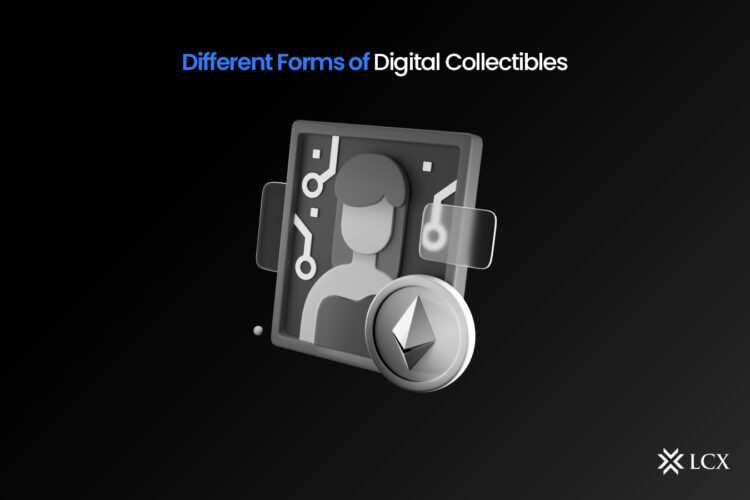
Different Forms of Digital Collectibles
Blockchain technology has enabled NFT collectibles to gain a substantial market share. NFT collectibles are categorised in numerous ways. Each class of virtual collectibles has numerous advantages. Several of the most common categories of collectibles are discussed in detail below.
Video Games
In this category of collectibles, users earn, purchase, or build new NFT elements. The market for collectibles is attracting significant attention from gamers. Massive amounts of in-game items are being sold by game developers on online gaming platforms. As virtual collectibles, aspects such as individuals, skin, and equipment are sold. In addition, the development of virtual gaming collectibles has contributed to the expansion of in-game item monetization. Furthermore, businesses are increasing their revenue by selling limited editions to consumers.
Artworks
This category of cryptocollectibles is the most prevalent on the market. It is not uncommon for artworks to sell for thousands of dollars; almost all of the NFT collectibles in distribution are artworks. This is because artists have quickly claimed the rising potential to capitalise on their creative talents digitally. The NFT artworks are a singular combination of creativity and technology. The most valuable NFT collectibles also include paintings, GIFs, and brief video clips.
Sports
This category of crypto collectibles enables sports fans to purchase, sell, and trade licenced video “moments.” The platform is utilized by sports enthusiasts to document iconic sports experiences in the form of brief video clips. Important events, from vital scenarios to record-breaking recordings, are common offerings on the platform. As of now, these historical sports recordings are being offered for exorbitant prices as NFT collectibles.
Memes
Nobody could have ever anticipated that memes possess monetary value. Memes have acquired the reputation of being a noteworthy and practical NFT variant on the market for digital collectibles. People are converting memes into NFT collectibles regardless of their social media popularity. The rising popularity of memes among innovators and inventors is fostering the development of a futuristic ecosystem.
Music
Using the imaginary collectible categories, creators can sell albums and unreleased music. The concept of selling music for NFT collectibles results in the creation of a new type of virtual collectible. The transformation of music files to NFTs grants the true proprietor the right to assert ownership. This expanding variety of digital collectibles has provided musicians with new opportunities. The tokenization of music has provided numerous benefits to musicians. From enabling musicians to keep all of their earnings without paying commissions to any record label or streaming service to having an immediate impact by providing listeners with a premium listening experience.
Ticketing
Until a few years ago, nobody could have anticipated that NFTs could be used as tickets. Popular gatherings such as festivals and concerts can utilise the platform to issue limited NFT tickets. NFT ticketing is a more secure instrument because it reduces the likelihood of black ticketing. Audience members can purchase tickets through auction listings that facilitate the validation of tickets and identities. Additionally, individuals can readily preserve e-tickets on their gadgets.
NFT Fashion
In recent years, the most notable accomplishment has been the increase in sales of fashion items such as NFT collectibles. In the year 2019, Nike acquired a patent that grants the actual proprietor of an NFT design the right to manufacture it. Increasing numbers of individuals are purchasing fashion items from the NFT market in order to design their online avatars.
The Importance of Digital Collectibles
Digital art’s accessibility and democratisation are two of its primary advantages. Digital art is more accessible to a broader spectrum of artists and audiences than traditional art forms, which require expensive supplies, studio space, and specialised training. Digital artwork’s capacity to challenge traditional conceptions of art and the art marketplace is another essential aspect. Without the need for physical galleries or spaces for exhibitions, digital art can be readily reproduced and distributed online, allowing artists to reach a global audience.
However, the worth of digital art remains a subject of debate. Some claim that digital art lacks the authenticity and physicality of traditional forms of art, while others view it as the natural advancement of art in the digital age.
The Future of NFT Collectibles
As of now, people are likely familiar with NFT collectibles and their operation. It would not be incorrect to assert that virtual artefacts are here to stay for the generation that prefers the convenience of digitalization to everything else. The NFT market continues to grow to include an increasing number of utility cases. Hundreds of thousands of dollars have been paid for these NFT collectibles. NFTs have notable applicability across a variety of industries.
The rise of NFTs and digital collectibles is altering the world of art. From the adaptability and democratisation of the art world to their potential for actual value, NFTs offer creators, collectors, and investors exciting new opportunities. However, there are obstacles that must be overcome as technology continues to advance. The future of collectibles, however, is digital, and it is a thrilling time to be an integral component of this transformation.

